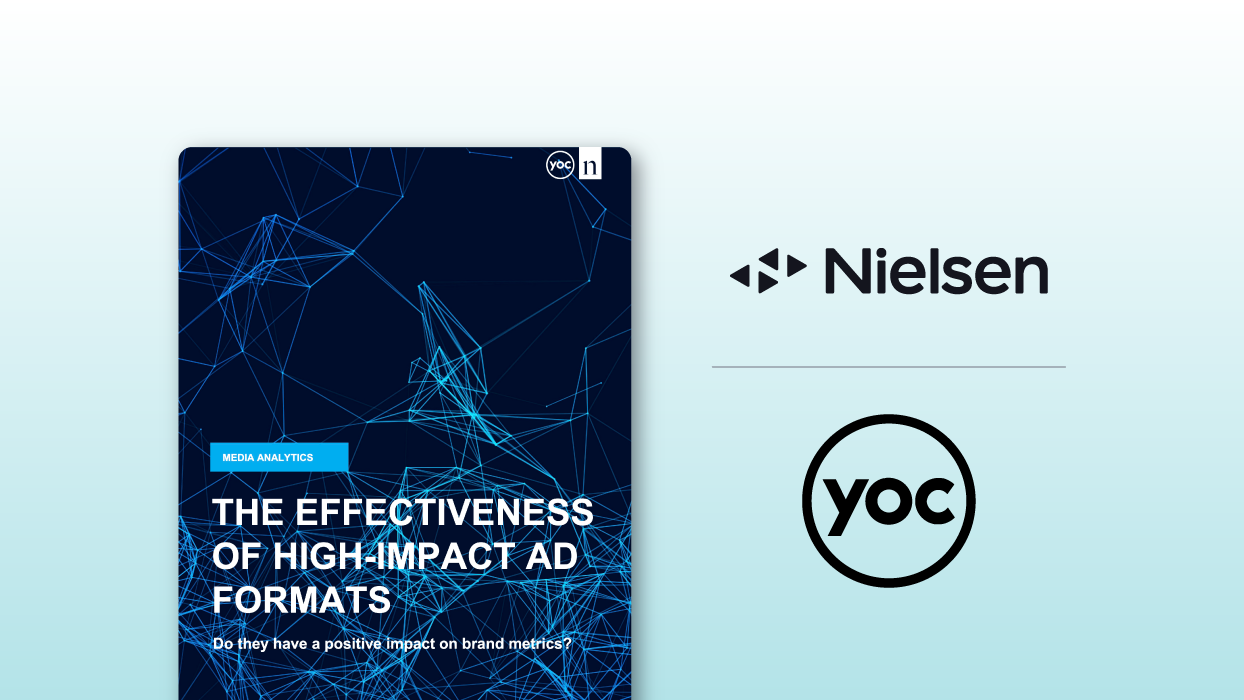Articles
The Evolution of Video
From Banner Ads to Connected TV to Cross-Device Targeting
November 2025
-2.png&w=3840&q=75)
Digital advertising has evolved at an incredible pace. From simple banner ads in the early days of the internet to today’s programmatic, data-driven campaigns across channels like display, video, and Connected TV (CTV).
Each step in this evolution reshaped how brands communicate with their audiences. Every new format (from static visuals to moving images to immersive CTV environments) added another layer of precision, storytelling, and impact.
Let’s take a closer look at how it all started and how we arrived where we are today.
THE BEGINNING: FROM TELEVISION TO DIGITAL ADVERTISING
Long before digital banners and programmatic platforms, television defined what modern advertising could be. When the first TV commercial aired in 1941 (a 10-second spot for Bulova during a baseball game) it marked the beginning of a new era. For the first time, brands could reach mass audiences in motion and sound, building emotional connections that print and radio could never achieve.
Throughout the 1950s and 60s, television advertising flourished. Prime-time shows became must-have slots for brands, and commercials grew into mini-productions, shaping how people viewed not just products, but culture itself. For decades, TV remained the most powerful way to capture attention and build brand identity.
THEN CAME THE INTERNET.
By the early 1990s, brands started exploring digital channels that could replicate TV’s reach, but with a new promise: measurability. In 1994, the first-ever digital display ad appeared online. a simple banner from AT&T that read, “Have you ever clicked your mouse right here? You will.” It achieved a staggering 44% click-through rate.
A reminder of just how novel online ads were at the time. It marked the beginning of digital advertising, offering a glimpse into what interactive, targeted campaigns could become.

However, the early web couldn’t yet match the immersive experience of TV. Banners and pop-ups provided visibility but lacked storytelling depth. As internet speeds and video technology advanced, marketers began experimenting with online video ads, bringing motion, sound, and emotion back to the digital screen.
This evolution bridged the gap between the emotional pull of traditional TV and the precision of digital targeting, setting the stage for Connected TV (CTV) and addressable video advertising as we know them today.
THE SHIFT TO MOTION: THE RISE OF VIDEO ADVERTISING
With broadband connections and better devices came a new era: video advertising. Platforms like YouTube (launched in 2005) transformed the internet from a static experience into a place for rich storytelling and visual engagement.
The impact was immediate. Video offered what static banners never could: emotion, attention, and brand storytelling. Marketers could replicate the emotional resonance of traditional TV advertising, while benefiting from the measurability and precision of digital targeting.
Unlike traditional TV advertising, which relies on broad audience segments and ratings data, digital video ads are served to individual users based on behavior, interests, and intent, all measured in real time. Advertisers can track engagement, viewability, and completion rates, optimizing campaigns dynamically.
Video quickly became a key bridge between brand awareness and performance marketing, a channel that delivers both emotional connection and measurable outcomes.
THE NEXT ERA: CONNECTED TV (CTV)
The rise of streaming platforms marked another major turning point. The era of Connected TV (CTV).
CTV refers to any television that connects to the internet, either directly (via smart TVs) or through devices like Apple TV, Amazon Alexa, or gaming consoles. It allows users to stream on-demand content from services like Netflix, Amazon Prime, or YouTube on the biggest screen in the house.
For advertisers, CTV merges the impact and reach of television with the precision, data, and flexibility of digital advertising.
Campaigns can be targeted programmatically, based on audience data, content type, or device usage, all in premium, brand-safe environments.
It’s important to distinguish between CTV and Addressable TV:
- CTV delivers digital video ads via internet-connected devices or streaming platforms.
- Addressable TV serves targeted ads through traditional broadcast or cable infrastructure using set-top box data.
In short, Addressable TV represents the evolution of linear TV, while CTV represents the digital future of television advertising. Both offer audience segmentation and measurable impact, but CTV is fully programmatic and integrated into the broader digital ecosystem.
For brands, this means access to engaged audiences, improved targeting, and the ability to unify TV and digital measurement.
WHERE IT ALL COMES TOGETHER
Today’s advertising landscape is no longer defined by single channels. It’s cross-device and connected. What began as separate worlds of display, video, and CTV has evolved into a unified ecosystem powered by programmatic technology.
Modern adtech platforms enable brands to plan, deliver, and measure campaigns seamlessly across all screens, from smartphones and desktops to smart TVs. This means that a user who first discovers a brand through a mobile banner might later engage with a video ad on their laptop and eventually watch a branded CTV spot in their living room. All within one consistent storytelling journey.

Cross-device advertising bridges these moments, ensuring that each impression contributes to a cohesive brand experience. It allows marketers to understand user attention and engagement across contexts, and to optimize not just for reach, but for impact.
In the end, this evolution is about more than new formats or devices. It’s about understanding attention as the true currency of digital advertising, knowing how to capture it, sustain it, and turn it into lasting brand value.
Looking to set up a cross-device ad campaign?


